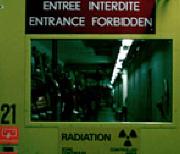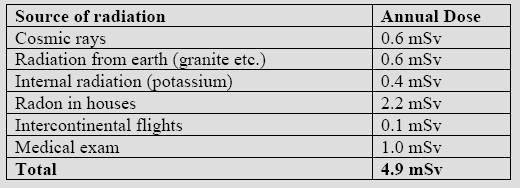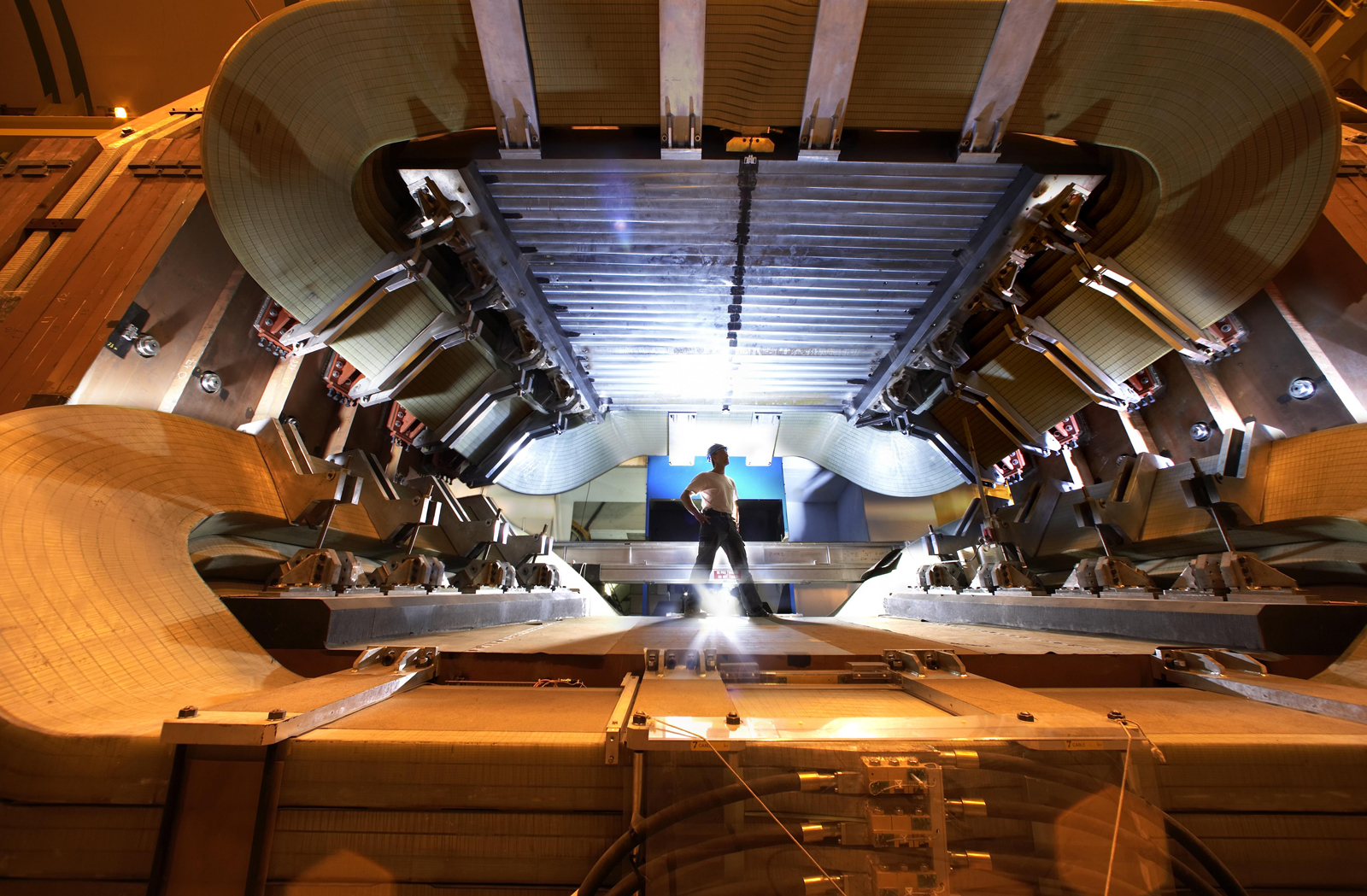Taking a closer look at LHC
Radiation in the LHC underground areas and in the accelerator tunnel is produced when protons interact with the nuclei of the residual gas atoms (beam gas interactions) or with the nuclei of the atoms of any other material surrounding the beams such as beam screens collimators, magnets, cables, cryostats or the beam dump (point losses). When there are circulating beams in the LHC,there is a small but continuous loss of protons along the ring. These lost protons will interact with the material that is close to the beams. These primary reactions produce secondary particles such as neutrons, pions, kaons and other protons. Some of these secondary particles have sufficient energy to interact again and cause the production of tertiary particles and so on.This phenomenon is called a hadronic cascade.
The fragments of the struck nuclei produced in the hadronic cascade are radioactive and decay on a timescale between a fraction of a second and many days. The accelerator thus continuous to produce radioactivity even though there are no more circulating beams. These fragments will then become radioactive. This means they emit radiation even when the beams are off.
| All materials (plastics, oil, concrete, aluminum, steel, iron, copper, etc) close to the beam pipe will become radioactive once the first beams are circulating in the LHC. Electronic equipment in the accelerator tunnel, the RR’s and the experimental caverns will also become activated. The level of activation depends on many factors such as the amount of radiation received, the exact material composition, the position in the machine and the time that has elapsed since the last proton irradiation. It is therefore difficult to predict the remnant radiation levels during a machine shutdown at any location. |
 |
Radiological Units
The Gray [Gy]: this unit expresses the amount of energy deposited by radiation per kg : 1 Gray = 1 Joule per kg.
We will use this unit mainly to express the amount of radiation dose received by material in the tunnel during the operation of the LHC. The tolerance of material or equipment to radiation can be expressed in terms of the amount of Grays the material can receive without failure. We refer to this limit as the Total Ionising Dose or TID of the material of equipment.
In some cases, the old radiological units the rad is still used and 100 rad = 1 Gy.
As it's been said, there are about 20 "effective" collisions every crossing, what implies 3000 particles every 25 ns. So detectors are under a high radiation levels.
For instance, let's take the 2000 tons CMS Central Barrel. Every second 600 million 14 TeV collisions take place in the center of this barrel, and let's suppose that most of this energy isdeposited in that area. So the total energy deposited per year (~300 days and 10 h per day) is:
(600·106 collision/sec)x(14·1012 eV x 1,6·10-19 J/eV)x(300 days x 10 hours/day x 3600 sec/hour) ≈1,5 ·1010 J
So the the absorption of radiation by kilogram of matter in CMS Central Barrel is in average:
Absorbed radiation dose ≈ (1,5 ·1010 J) / (2000·103 kg) ≈ 7500 Gray/year
In fact, on very exposed areas radiation level reaches more than 10 kGy per year.
The Sievert [Sv]: This unit is used to express the dose received by a human being. The dose in Sieverts is equal to the absorbed dose in Grays times a quality factor named Q. The quality factor Q depends on the type of radiation and the particle energy has been introduced to take into account the biological effects. The values of Q can vary between 1 and 20 and have been determined by the International Commission for Radio Protection (ICRP).
When there is no beam present in the LHC, there is only remnant radiation caused by photons (x- rays and gamma rays) and electrons (low intensity β-rays). In this case, it is correct to take Q=1 so that 1 Sv = 1 Gy.
In some cases, the old radiological units the rem is still used and 100 rem = 1 Sv.
The Becquerel [Bq]: This unit is used to define the activity of a radioactive source. 1 Becquerel corresponds to 1 decay per second. Waste with a radioactivity less than 2 Bq/gram is classified as non-radioactive and may be disposed of in the same way as non-radioactive waste.
In some case, the old radiological unit the Curie is still used and 1 Curie = 3·107 Bq.
The Bq is a unit that you will not encounter very often in your day to day work in controlled areas at CERN. The activity of material that is taken out of a controlled area at CERN is usually expressed in terms of the remnant dose rate in μSv/hr at 10 cm distance of the object.
Dose Limits
The ICRP recommends a dose limit of 20 mSv/year for workers in nuclear installations.
CERN has set a dose limit of 15 mSv per year for personnel in possession of a radiation badge, 6 mSv per year for other staff members and 1 mSv per year at the fence of the CERN premises.
It is interesting to compare the additional dose received by CERN personnel in the course of their work to the dose received by any person living in the Pays de Gex (where the most of LHC is placed):

Dose Rate Limits.
Controlled areas at CERN have been classified according to their remnant dose rate. In practice, it will be difficult to obtain authorization to conduct work in areas with a dose rate above 2 mSv/hr, while work in controlled areas with a remnant dose rate below 1 mSv/h is usually admitted.

The remnant dose rate in the Pays de Gex is approximately 0.1 μSv/hr or 100 nano Sieverts per hour.
|
AUTHORS Xabier Cid Vidal, PhD in experimental Particle Physics for Santiago University (USC). Research Fellow in experimental Particle Physics at CERN from January 2013 to Decembre 2015. He was until 2022 linked to the Department of Particle Physics of the USC as a "Juan de La Cierva", "Ramon y Cajal" fellow (Spanish Postdoctoral Senior Grants), and Associate Professor. Since 2023 is Senior Lecturer in that Department.(ORCID). Ramon Cid Manzano, until his retirement in 2020 was secondary school Physics Teacher at IES de SAR (Santiago - Spain), and part-time Lecturer (Profesor Asociado) in Faculty of Education at the University of Santiago (Spain). He has a Degree in Physics and a Degree in Chemistry, and he is PhD for Santiago University (USC) (ORCID). |
CERN CERN Experimental Physics Department CERN and the Environment |
LHC |
IMPORTANT NOTICE
For the bibliography used when writing this Section please go to the References Section
© Xabier Cid Vidal & Ramon Cid - rcid@lhc-closer.es | SANTIAGO (SPAIN) |



